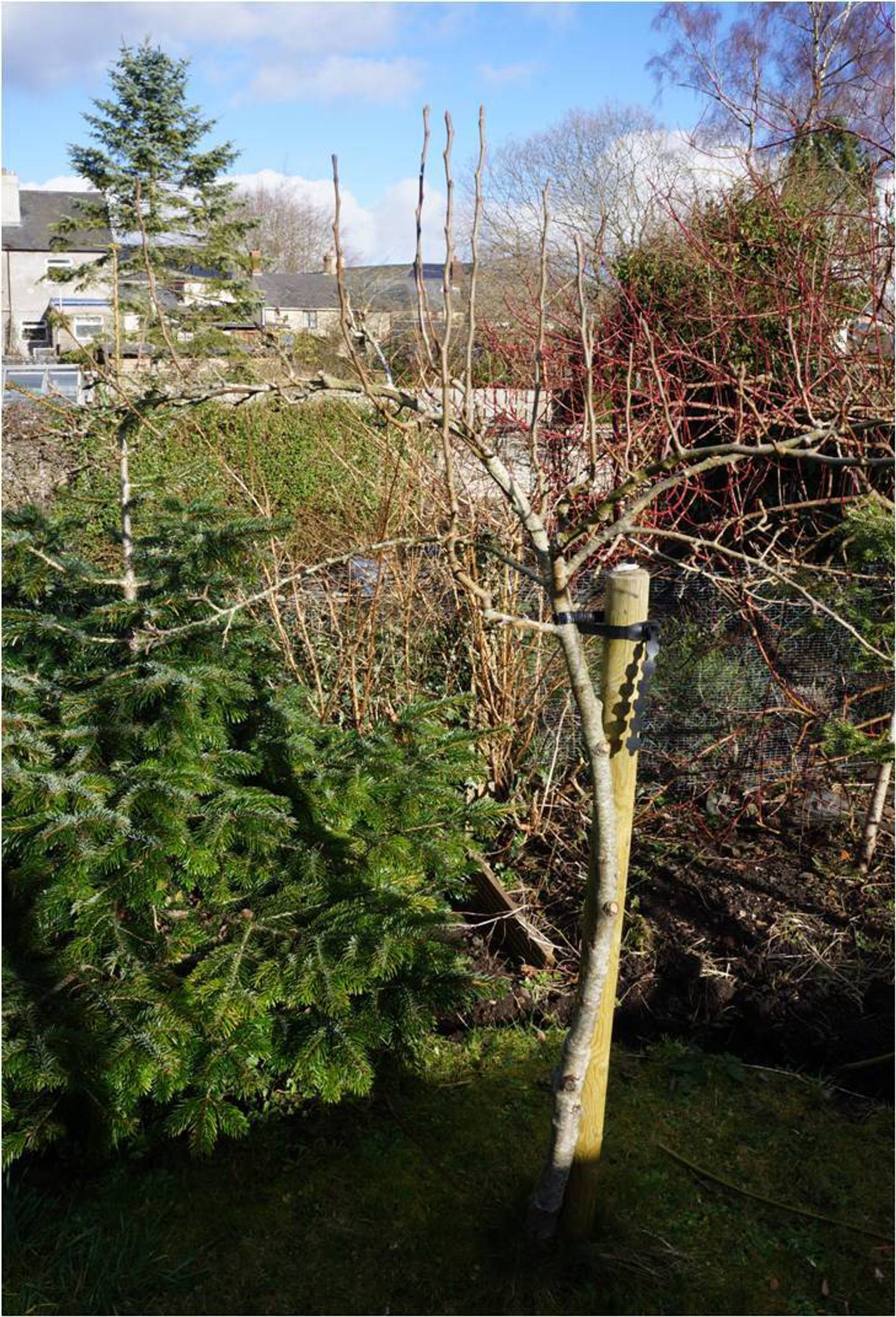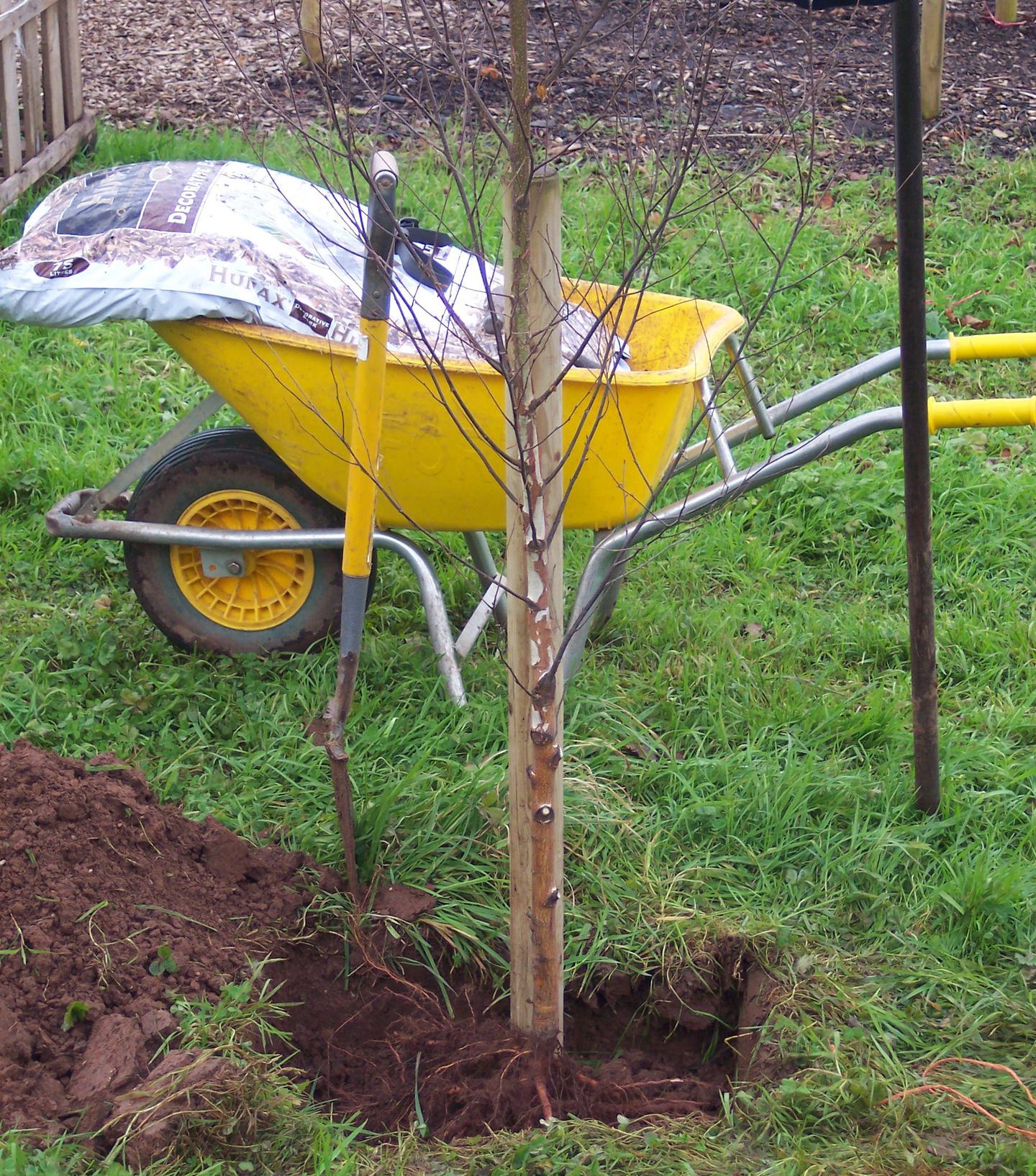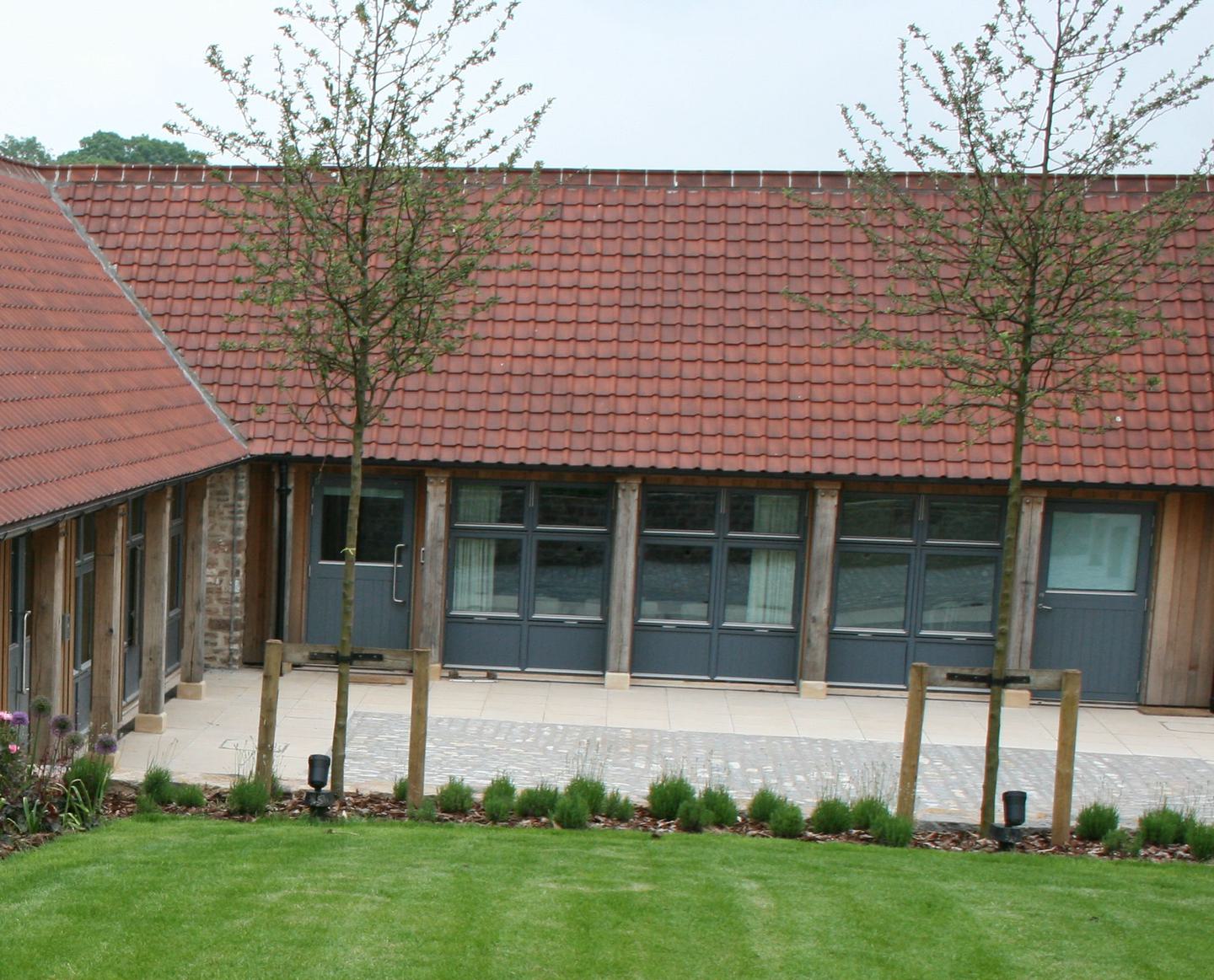Guides
Staking - what happens when you don’t get it right
If you're planting a tree that is over 150cm tall at the time of purchase, we always recommend staking it. What could happen if you don't stake, or don't do it correctly?
Nursery production vs a tree growing in the wild
To understand why we need to stake, it's useful to understand how trees develop. So, imagine a tiny acorn which finds itself in the ideal conditions for sending up a little shoot into the world, with some nicely aerated ground beneath, perfect for a fledgling root system to find its way into a moist soil. Now imagine really hard that no animals, harsh weather or human hazards come along and ruin things for the little chap, a year passes, and the roots keep going, feeding a perfectly formed little sapling.
Fast forward another five or ten years and that tree (against high odds!) has formed a beautiful underground structure of nicely branched roots that not only feeds the top part of the tree, but also keeps it nicely anchored. A feedback loop from crown to roots has informed the underground factory about its needs, including those related to weather and prevailing winds. In response, the roots have thickened up in certain areas and spread out where they can best work keep the tree rooted to the spot. The roots may extend wider than the spread of the crown, and go down around a third of the height of the tree. The tree trunk, meanwhile, has also toughened up in response to weather patterns.
Now imagine a tree grown in a tree nursery, destined to be transplanted to its final growing location when it is 5 or ten years old, or even older. It might have been grown in a field for a while, then transplanted to another field before being dug up again minus some of the longer roots, or it might have been potted up, its roots trimmed to fit the container.
Growing in its pot, the stem is tied into a system of rails to make sure it doesn't blow over, the compost is plugged into an irrigation system and regular feeds are given in place of roots being able to seek out nutrient-rich soil, once the good stuff in the compost has all been consumed. The roots are doing their job feeding lots of top growth, but the rails are keeping the tree standing. See where we're going with this?
In short, the (perfectly good) roots you get on a nursery-grown tree haven't yet adapted to life in the outside world and haven't reached their full potential in terms of size. Only once you've bought your tree and put it in its new, permanent home, will those roots spread their wings and get on with what they were born to do (see above).
This is the key reason we stake newly planted trees: the roots on a nursery-grown tree are relatively small and cannot adequately anchor a tree planted in a freshly dug hole.

Wind: root rock and worse
As wind catches the tree canopy, it can cause the roots to shift in the ground - "root rock" - which will slow down tree establishment. Energy the tree has spent sending out fine roots that connect with vital minerals and moisture in the soil will be wasted when they are dislodged and the tree will not appear to thrive up above.
While a tiny young tree that is a mere whip of a thing might not catch much wind and thus doesn't require a hefty stake to keep it in place, any nursery-grown tree that has a nice head of leaves is even in danger of being wind-thrown when newly planted, without extra support.
With poor or no staking, being uprooted is the worst case scenario, but almost as undesirable is the prospect of a tree growing sadly at a funny angle, which is hard, if not impossible to remedy.

How to stake
- Stakes should be buried about a third of their length and installed upright. Some people advocate angled stakes, but we find these are tricky to get right.
- Ideally they need to be on the side of the prevailing wind, so that the tree is blown away from the stake. (It's commonly thought most winds arrive from the Atlantic and the wind often blows from the west or south-west in Britain.)
- They should also be in proportion to the tree. A slim stake is appropriate for smaller trees (e.g. under 180cm/6ft), otherwise stick with standard stakes.
- Use a double staking system with a cross-rail for trees in pots 30 litres and above as you can't get them close to the trunk without damaging roots. Ask at the nursery if you're not sure what you need.
- On single stakes, ties should have a spacer between the tree and the stake. The stake shouldn't touch the trunk, or it could rub and damage the bark.
- On double stake set-ups, there needs to be a cushion between the tree and the cross rail, so the trunk doesn't rub on the rail.

But some people say it makes the tree weak...
I know, we talked about roots and tree trunks adapting to weather, and then said it's crucial to stick an artificial support on your tree. The tree will naturally adapt to its conditions, but we assume you want it to adapt in an upright manner. So allowing the top of the main stem to flex in the early years, while the roots reach out and down, while offering some added help is the best way to make sure this happens.

When can I remove the stake?
The stakes can come off by year 3, as a rule of thumb. If it never so much as blows a breeze in your locale, you could take it off after the first year; if you're on the Atlantic coast, perhaps wait!